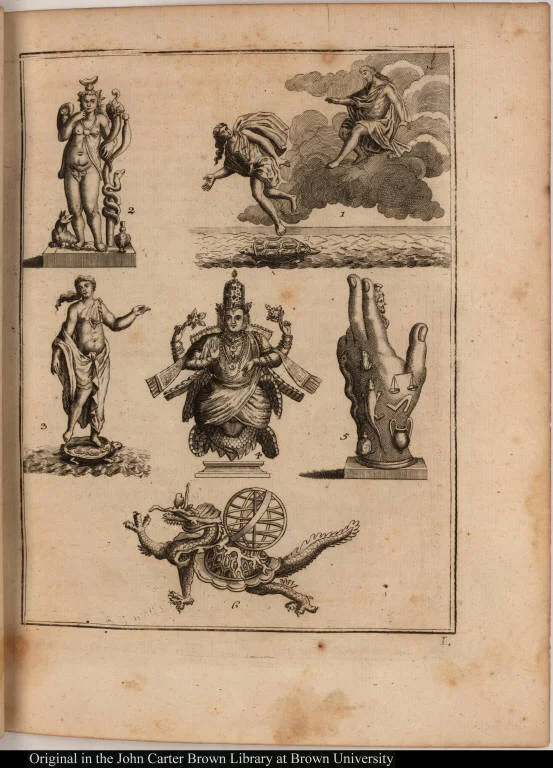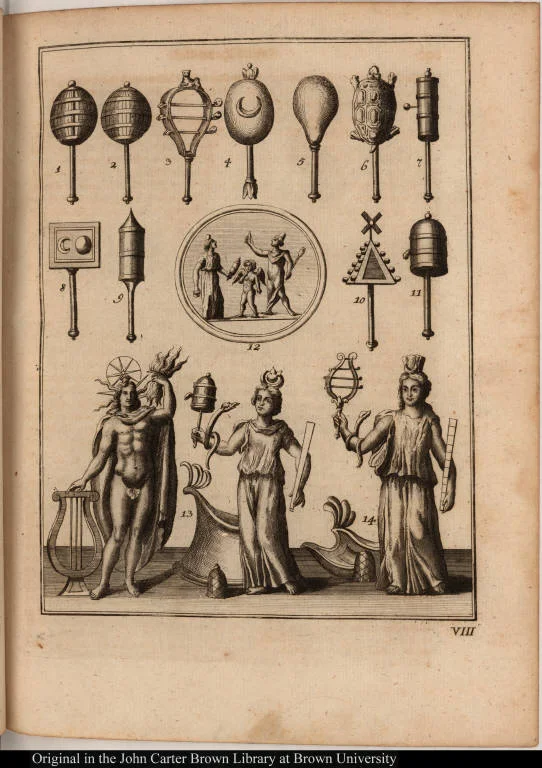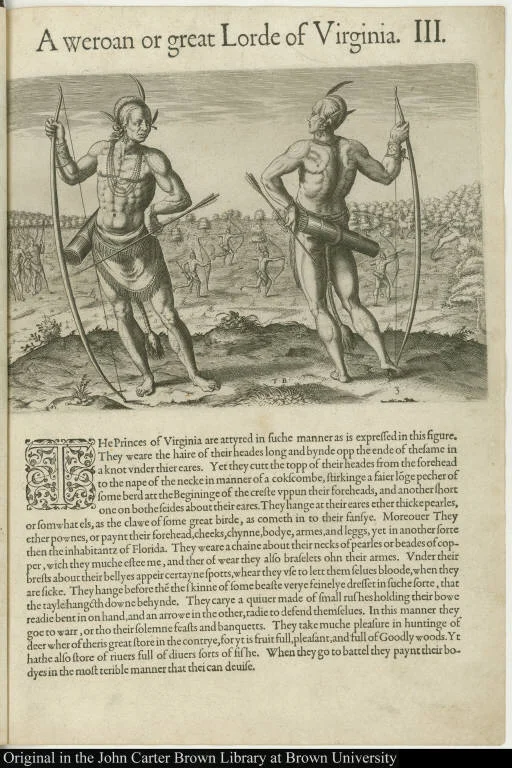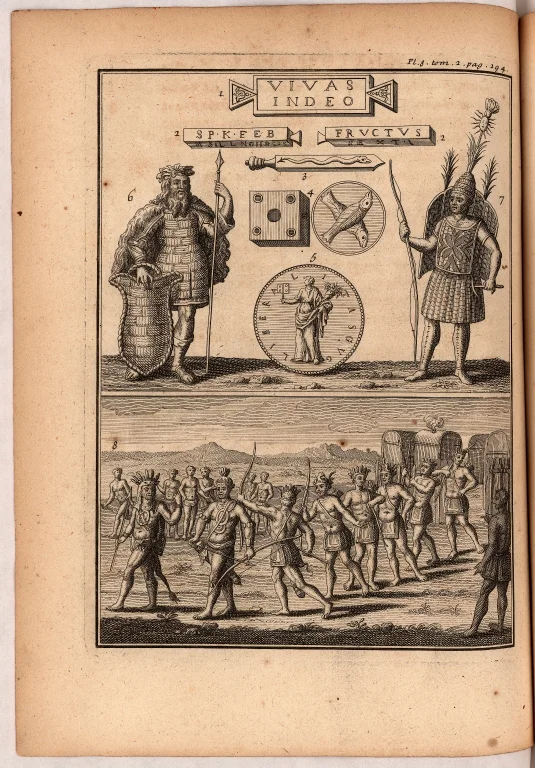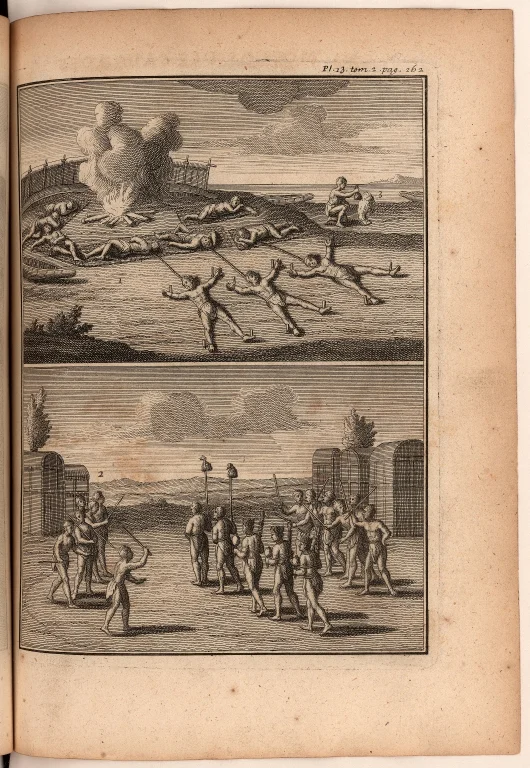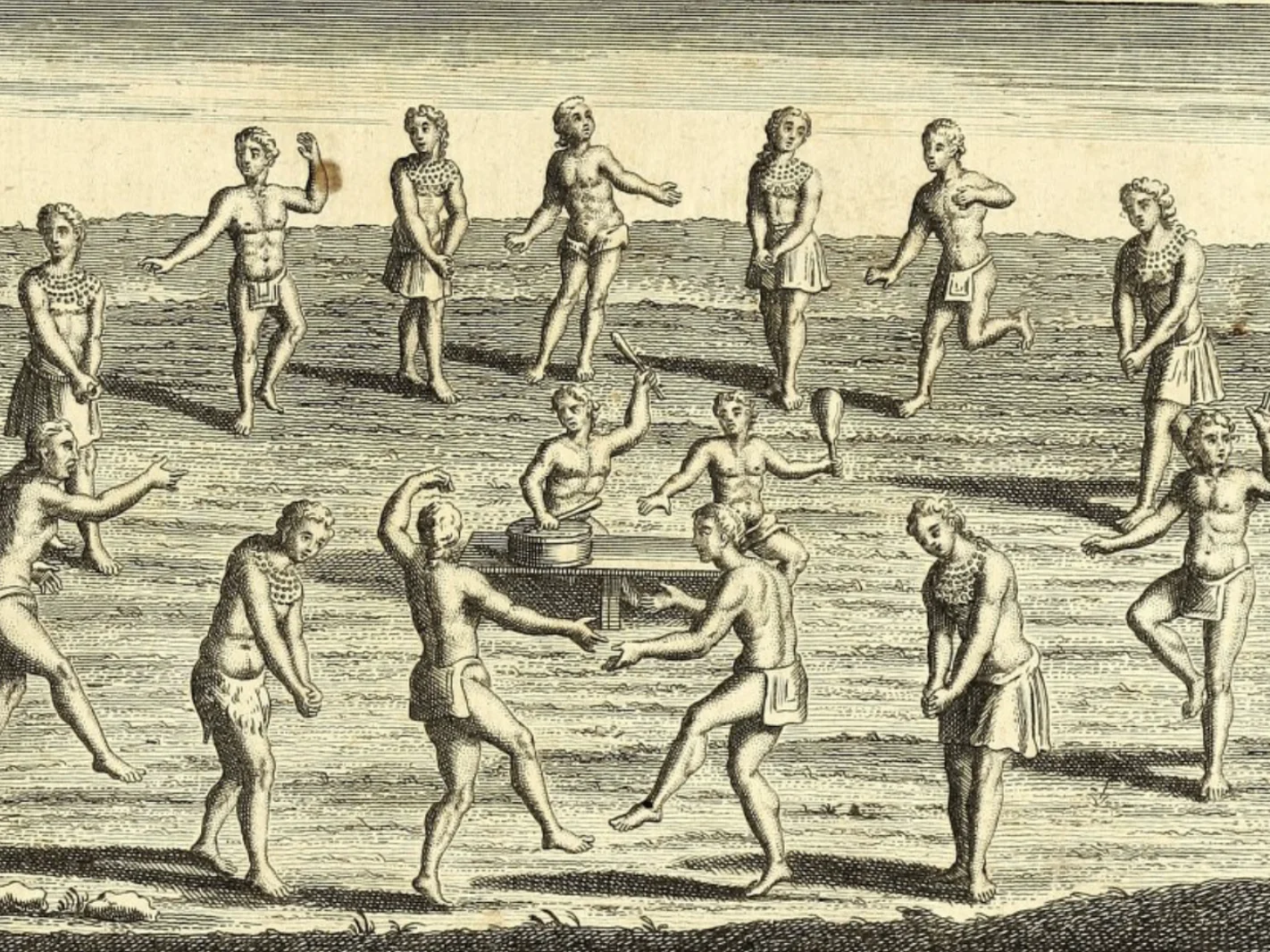
Introduction
Religious Parallels: The Iroquois and Greco-Roman Christianity
[Representations of world religions]
1751-1800
-
 p. 1
p. 1The images reprinted here come from Joseph-François Lafitau's Moeurs des sauvages ameriquains (1724). The top right depicts the Haudenosaunee creation story of Turtle Island, in which a human steps on the back of a turtle. The middle left depicts a statue described by the ancient Greek geographer Pausanias of Aphrodite standing atop a turtle. Pausanias gives no explanation for why she is standing on a turtle and Lafitau does not suggest that he knows, either. However, the visual parallel he draws between Haudenosaunee and ancient Greek myth supports his (strange) argument that Indigenous Americans are much like ancient Europeans.
Crafts and Material Knowledge
[Musical instruments from various cultures]
1751-1800
-
 p. 1
p. 1Like many other images in this book, this image was originally printed in Joseph-François Lafitau's Moeurs des sauvages ameriquains (1724). In the text of Moeurs des sauvages ameriquains, Lafitau pays special attention to the musical instrument made out of a tortoise. He argues that this instrument is an iteration of the Lyre of Apollo, an instrument from Greek mythology. Apollo and his lyre are depicted in the bottom-right corner of the image.
War Prowess and Brutality
A weroan or great Lorde of Virginia.
1492-1600
-
 p. 1
p. 1This illustration, fairly typical and often replicated in its time, depicts the weapons and war strategies of the Indigenous peoples of the Chesapeake Bay area, with both the image and the surrounding text belittling their wooden weapons, lack of armor, and traditions using war paint.
[Planche VIII. pag. 174 [sic]. Cette planche divisée en deux sujets, fai...
1701-1750
-
 p. 1
p. 1The top part of this image contrasts a depiction of a Marcomannic warrior (an ancient Germanic tribe conquered by the Romans) with a depiction of a Native American warrior from an edition of Samuel Champlain's Des sauvages, showing similarities in their wooden armor and spear-like weaponry. By putting these disparate images side-by-side, Lafitau again manufactures proof for his argument that Indigenous American peoples reflect ancient European practices. Moreover, by choosing an image of a clothed and armed Native warrior, he presents an image that would have been more palatable to Europeans, and thus potentially somewhat humanizing.
[Planche XIII. pag. 262. Conduite des prisonniers, & leur entrée dans le...
1701-1750
-
 p. 1
p. 1These two images present various methods that, according to Lafitau, the Iroquois used to maintain order among their prisoners of war: how they tied them up to keep watch of them overnight and how they brought them to the village of the victors. The canoe on the top left, the man preparing the scalp on the top right, and the prisoners holding turtle rattles and swan-feather staffs are all Indigenous Iroquois technologies. This depicts Iroquois war practices as having order, systematic knowledge, and technology behind them, even in their brutality, and Lafitau recognized that.
Conclusion
Editorial Note
Project Creator(s)
- Michal Loren
- Rachel Moss
- Emily Monty
- The John Carter Brown Library
